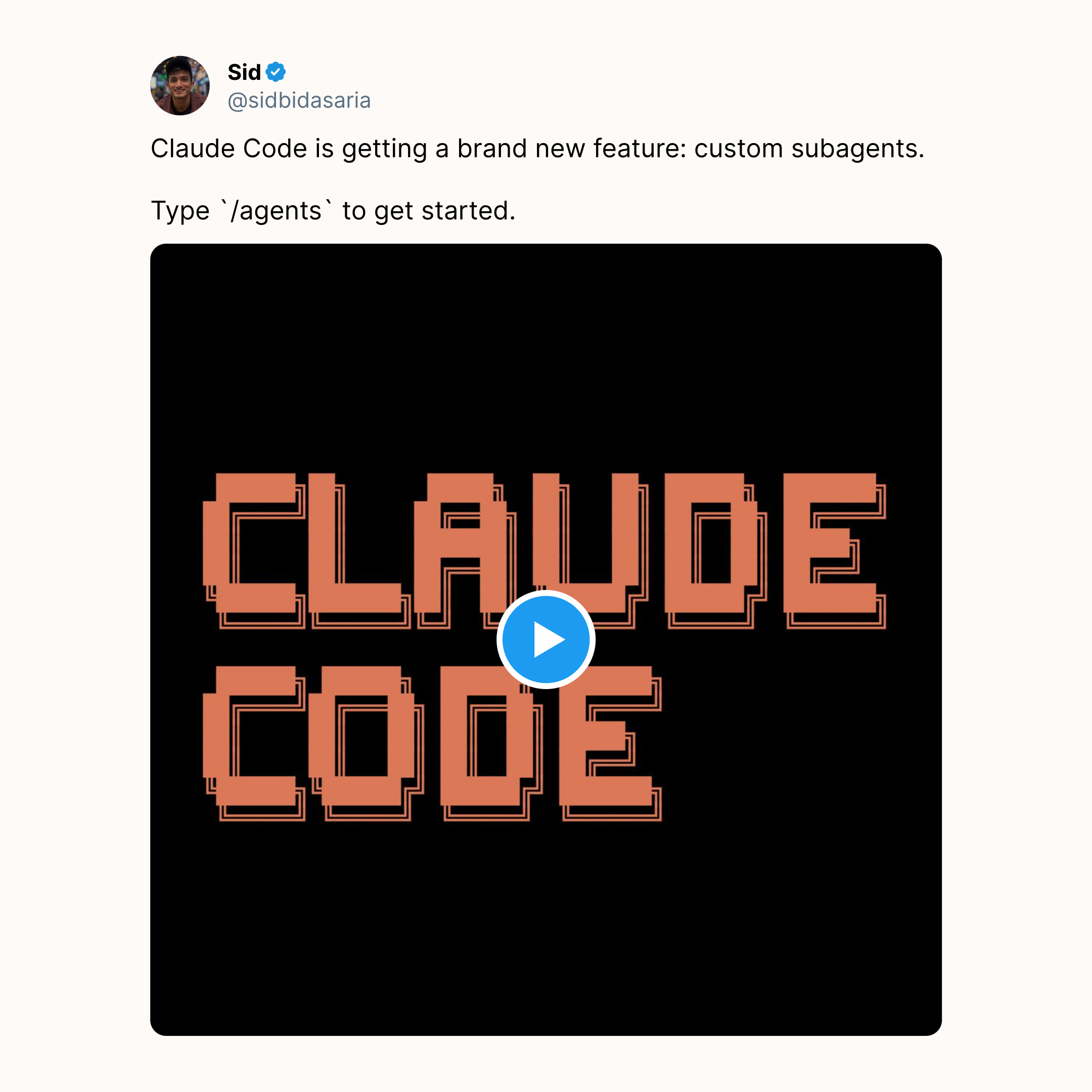
Was this newsletter forwarded to you? Sign up to get it in your inbox.
News in AI waits for no one and nothing—not even Every’s quarterly Think Weeks.
We’d started last Thursday with an impromptu Demo Day, sharing our hackathon projects for Every subscribers, and finished it at a ping-pong rave in the cellar of a refurbished barn. Then came the tweet heard ’round the offsite:
As car after car made its way back to the house in upstate New York, almost every person walked through the door and beelined for their machines, ready to see if Anthropic had, to put it in the terms of the week, “made it slap.”
Which is how Kieran Klaassen (general manager of Cora) and Danny Aziz (general manager of Spiral) ended up at the dining room table around midnight, Kieran's Limitless pendant recording everything for posterity, telling the agents inside Claude Code what to do. Literally telling them, using Every's newest product, an AI voice tool called Monologue (currently in public beta).
To be clear, I wasn't actually at the big kids' table for this conversation. While they were debugging the future of AI orchestration, I was across the room learning what a branch was and why they're a good thing to have. But thanks to Kieran's pendant and the magic of AI transcription, I can tell you exactly what happened when two senior engineers test-drove Claude's newest feature at what amounted to a very “Every” version of an afterparty.
The meta-agent ouroboros
If you're like me and the word “agent” tends to evoke Bond more than bots, here's what you need to know: Agents are AI assistants that can perform specific tasks independently—like specialized employees you can hire for a single job. Claude's new feature lets you create these digital workers on the fly, each with their own personality and expertise.
Agents are supposed to be the next evolution of AI coding, going beyond mere “coding assistants” to managing entire projects on their own. This is exactly the kind of technology that fits into what Kieran calls "compounding engineering"—building systems that build systems, where every iteration makes the next one stronger. He's been running multiple Claude instances in parallel for months, treating them like a coordinated dev team. Now Anthropic has built a version of that capability into Claude Code itself.
At one point during the late-night jam session, Danny decided to test whether they could create an agent that creates other agents. He fired up the "generate command" agent and asked it to create one more agent—a simple Apple user interface reviewer that would review his code changes.
The Only Subscription
You Need to
Stay at the
Edge of AI
The essential toolkit for those shaping the future
"This might be the best value you
can get from an AI subscription."
- Jay S.
Join 100,000+ leaders, builders, and innovators

Email address
Already have an account? Sign in
What is included in a subscription?
Daily insights from AI pioneers + early access to powerful AI tools








.png)


Comments
Don't have an account? Sign up!